Earlier this year, TABLE Contributor Corinne Whiting left the chill and gloom of Western PA winter behind to discover sweet and educational chef-led adventures around Mexico’s Yucatán Peninsula. Famed chef Richard Sandoval showed her how he balances sustainability, hospitality, and deliciousness. His bees were the star of the show.
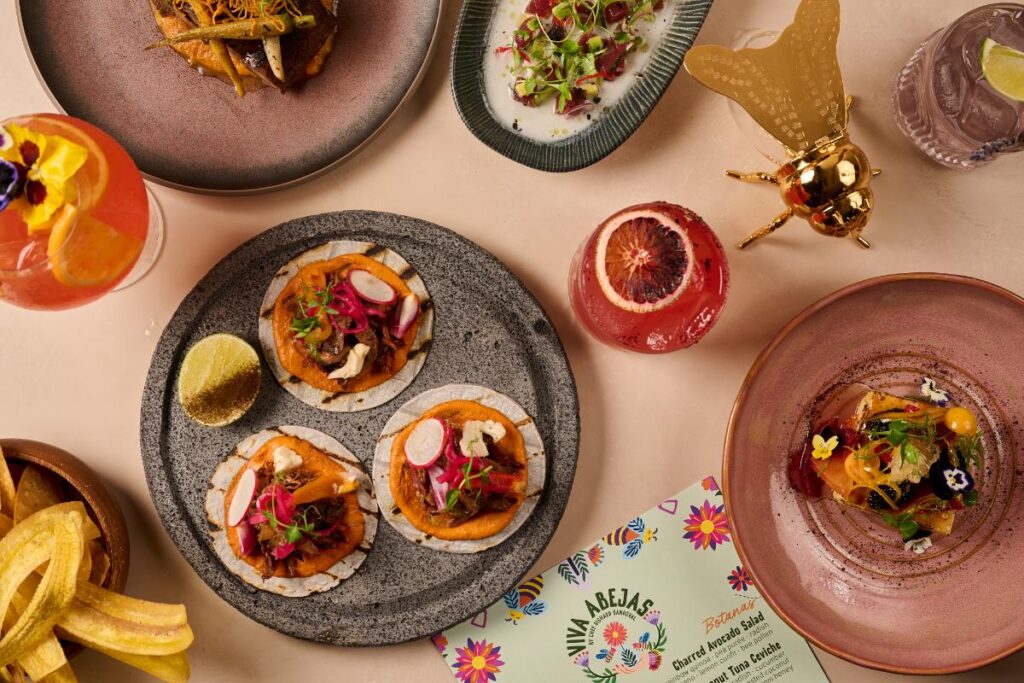
A sumptuous farm-to-table spread prepared by Chef Richard Sandoval.
How Bees Help Mexico’s Yucatán Peninsula Thrive
In February, I gleefully escaped more snow with an adventure to Mexico’s enchanting Yucatán Peninsula on a trip inspired by the sustainability efforts of Chef Richard Sandoval. For more than three decades, Sandoval has built a global empire of sorts, with his Mexican restaurants now spanning 60 locations across four continents. For Pittsburghers, the closest outposts can be found in D.C. and NYC.
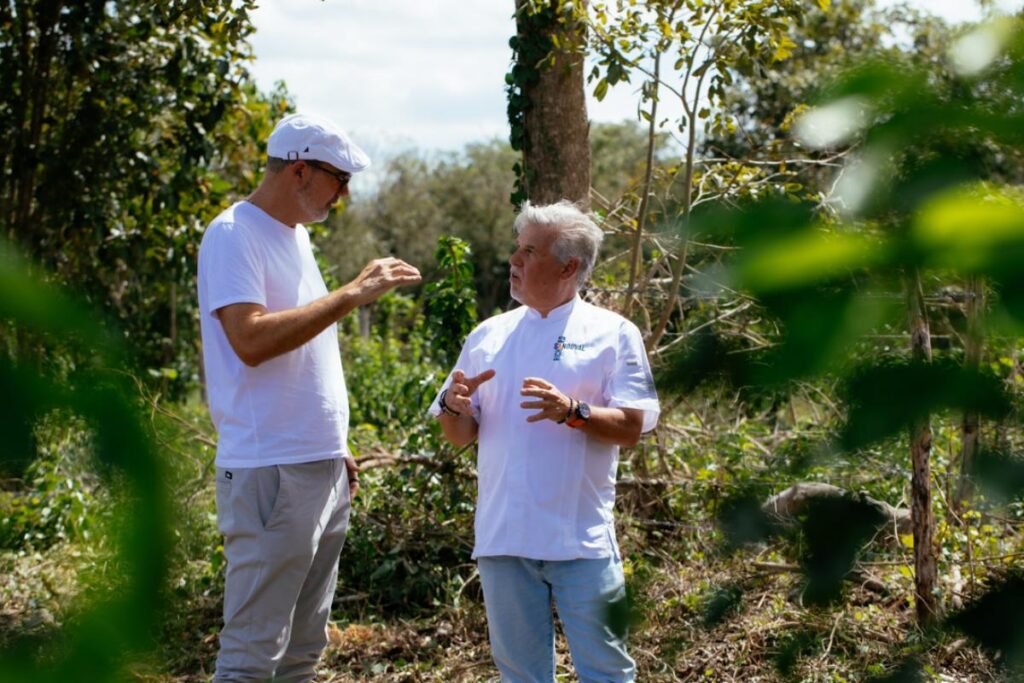
On the Yucatan peninsula, the citrus capital of Mexico, Chef Sandoval visits the orchards of Alma Finca orange liqueur.
The Importance of the Bee
Sandoval, a self-proclaimed introvert who loves playing tennis and increasingly craves quiet, has a kind presence and easy laugh. He’s admittedly growing weary from his constant globe-hopping and looks forward to passing along the baton to his two 20-something children (also on our group trip, a delightful addition). The team previously took an educational culinary adventure together to Oaxaca. This Yucatán excursion was inspired by an initiative Richard Sandoval Hospitality launched in 2022 to raise awareness about the vital role of bees in our food system and ecosystem.

Alma Finca, the only Mexican orange liqueur made from fresh ingredients harvested from the Yucatan peninsula.
Through Viva Abejas (“Long Live Bees”), Sandoval has introduced bee-inspired menus at several restaurants for the past couple of springs. In early 2023, he released his first children’s book of the same name, with all proceeds benefiting the World Bee Project. All of this work intends to amplify the fact that every third bite of food we take depends on bees for pollination. (Of note: avocados as well as the agave plant, which feature frequently in Latin cuisine.)
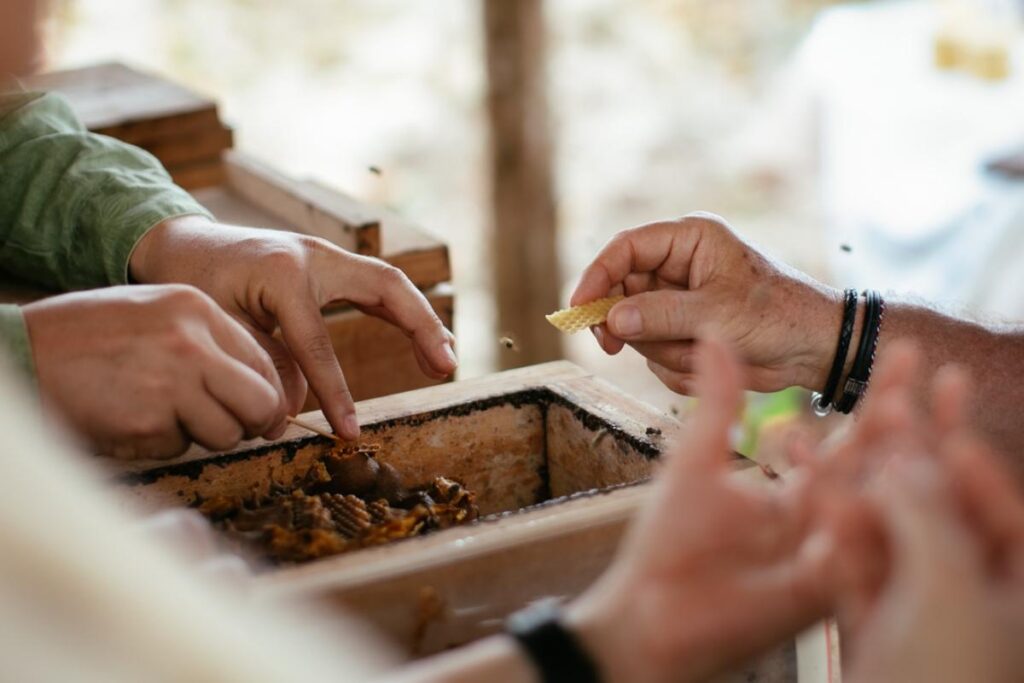
The team gets a hands-on lesson with local beekeepers.
Mérida’s Land of Bees
Our trip stations in Mérida, a colorful destination rich in Mayan and colonial heritage. We also got out to surrounding towns to learn about people and businesses with whom Sandoval collaborates — like Alma Finca orange liqueur, ideal for mixing into spicy mezcalritas and cosmopolitans. In a shaded patch of one of their orchards, we learned about the Alma Finca Project facilitated by Free Range Beehives, a Denver-based “corporate beekeeping” company that’s on a mission to support and enhance pollinator populations. Free Range also helped install bees here in November 2024, working with local Jose Cortes Larriva to care for the stingless Melipona bee species used for the project.
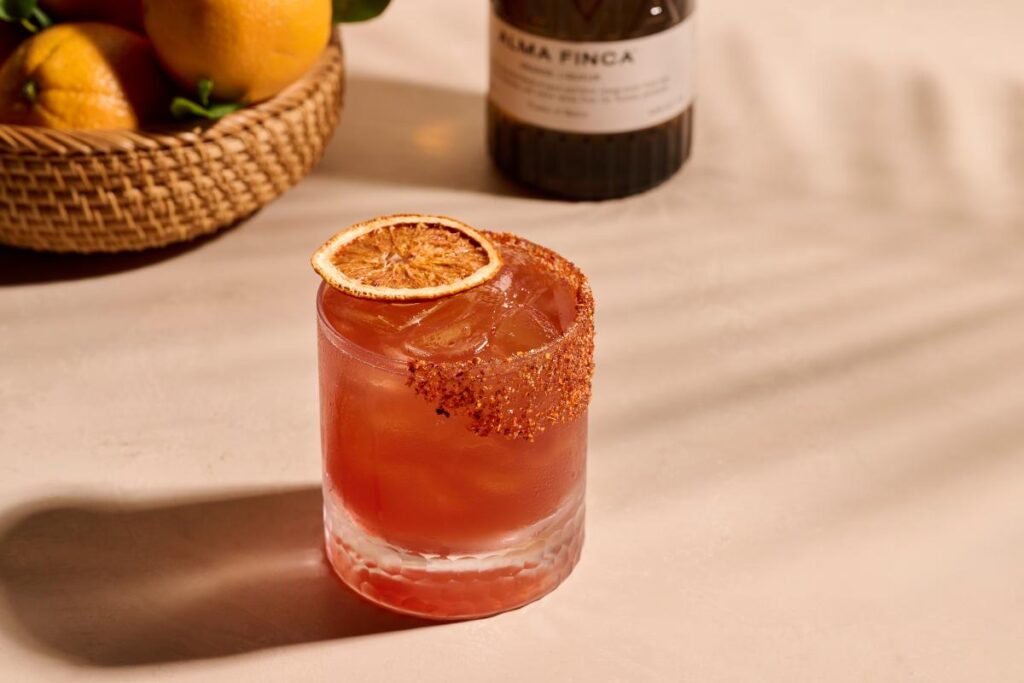
A tasty cocktail with spiced rim made with Alma Finca.
During our grove visit, Emmaida Figueroa of Miel Nativa also shared about her business’s involvement and its commitment to the reproduction of these native bees. We learned that 90 percent of Melipona hives have been lost in the past 35 years (due to factors like deforestation, loss of forage, and pesticide use). Figueroa let us sample some of the goods sold at her downtown shop, including divinely thick Melipona honey, used by the Mayans for its medicinal superpowers since ancient times.
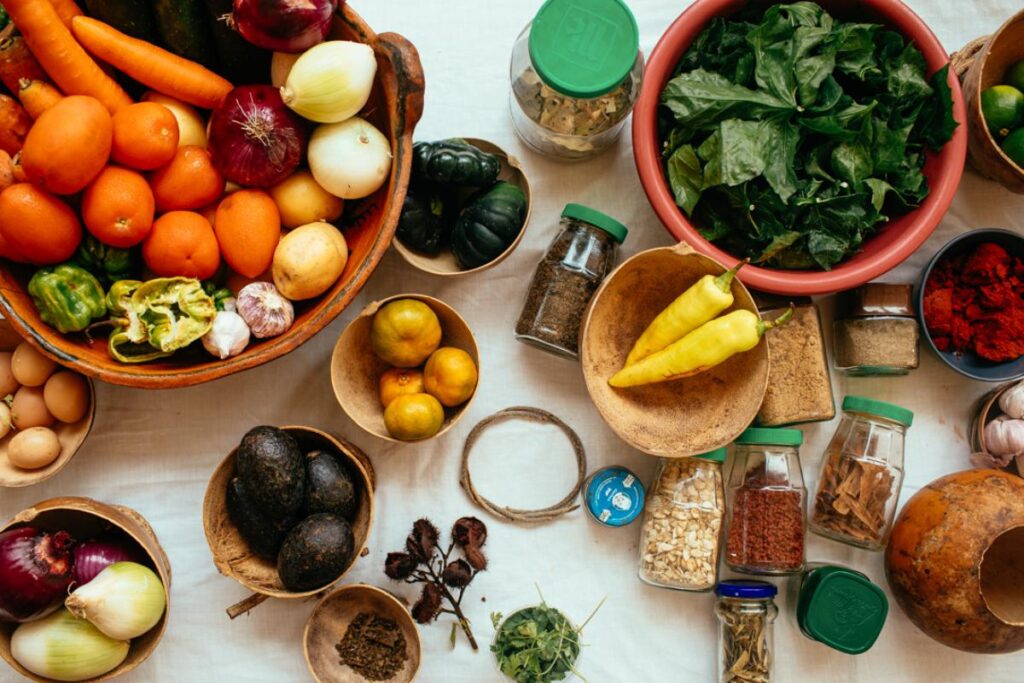
Staying Close to the Action
During our trip, hotel Fiesta Americana became our downtown Mérida HQ, conveniently situated at the crossroads of the capital’s main avenues — Paseo Montejo and Colón. (Those seeking a more intimate lodging experience might opt for nearby boutique options like Adora Hotel.) Our location made for easy strolls past exquisite architecture just as the city was swirling to life, to friendly breakfast spots like Justo Bread Studio and Fronto.
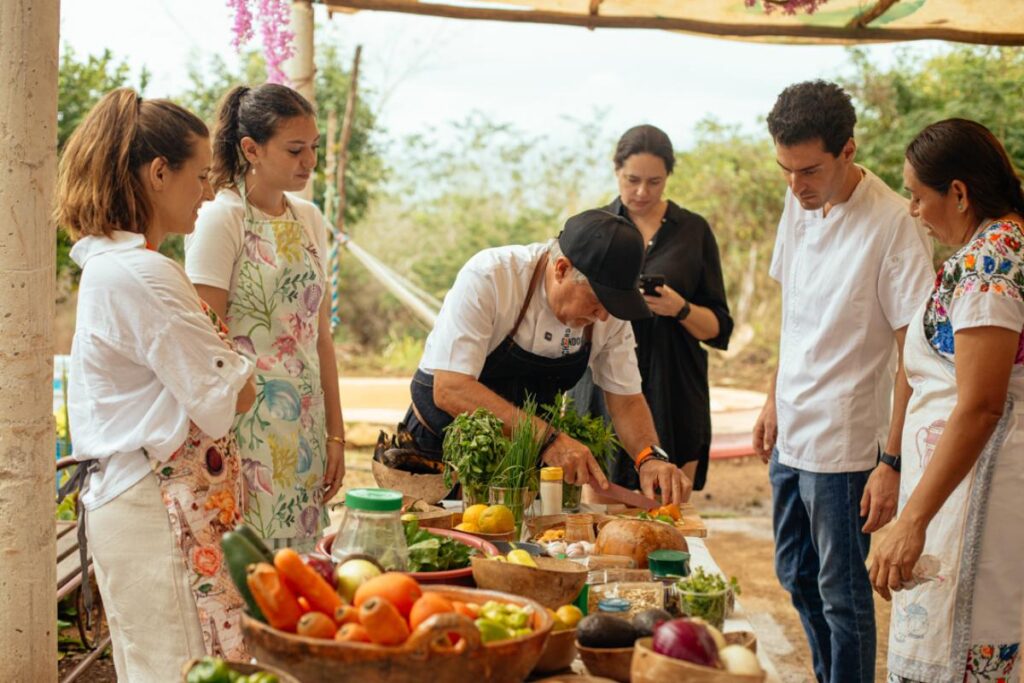
The entire group enjoyed a hands-on cooking lesson in the home of a welcoming Maya-Yucatec family.
I enjoyed my most memorable desayuno, however, inside the tranquil, arched courtyard of Casa T’Hō, a design-fashion-art hub opened in 2017 by three passionate owners wanting to showcase local creative talent. In the center of this once-abandoned, early 19th century mansion, I leisurely enjoyed my migas con huevo and pineapple-tumeric-ginger juice before perusing on-site boutiques stocked with gorgeous Mexican goods.
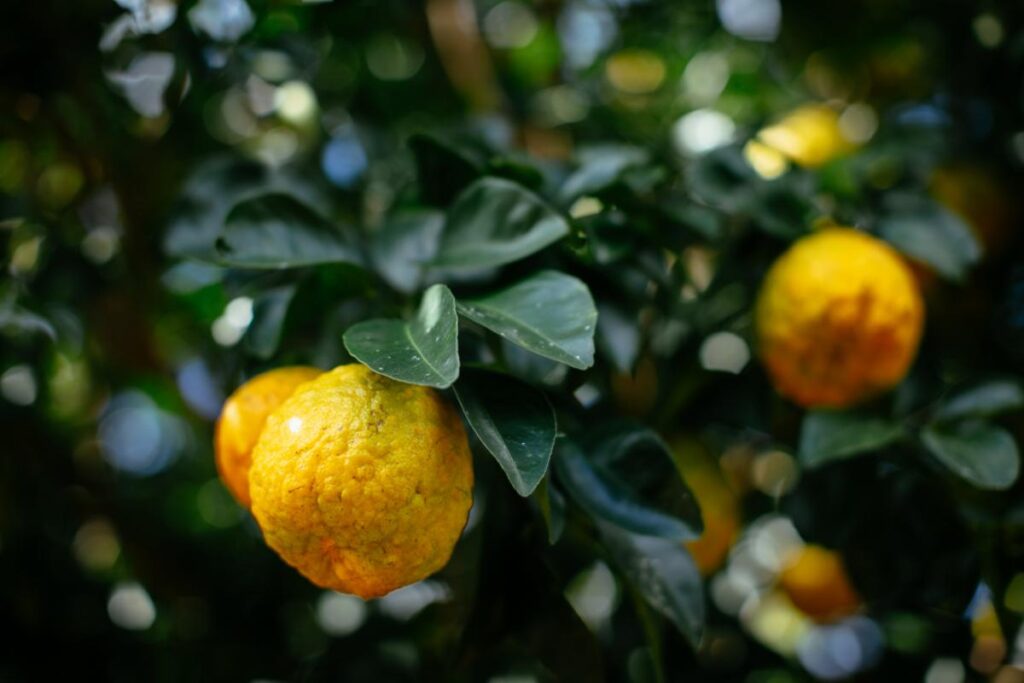
All ingredients were freshly harvested, including citrus, a prized ingredient across the Yucatán peninsula.
Immersion in the Communities
Every meal on this trip felt memorable, whether wandering the narrow food markets alongside Chef and our Eating with Carmen tour guide (think gorditas, salbutes, tamales and the freshest of juices), or while taking an at-home cooking class in the teeny town of Abala. Here a Maya-Yucatec family welcomed us in for a hands-on lesson about ingredients grown in their soil (like a nutritious, leafy vegetable called chaya) as well as culinary techniques passed down through the generations.
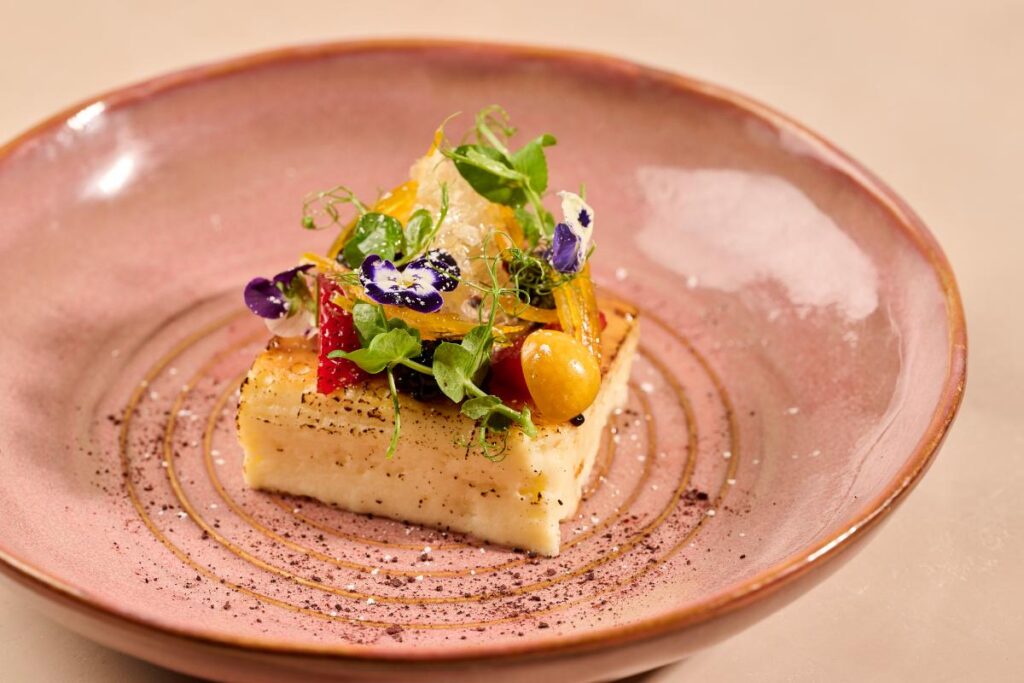
With a backyard rooster wandering nearby and a playful kitten underfoot, our gracious hostess casually concocted a multi-course lunch. She used her palate to taste along the way — a method Chef Sandoval prefers his team to use, too. (After all, a recipe is merely a guideline, he says.) Eventually, our group crammed around a large wooden table to devour an array of salads, warm tortillas, lemon soup with grilled tomatoes, onions, garlic and sweet pepper, plus pollo pibil — a Yucatán dish that’s slow-cooked in banana leaves and traditionally made with pork.

A Mexican artist explained henequen, a native Yucatán plant used in textiles and handicrafts.
A Memorable Lesson on Community Sustainability
Back in Mérida, we feasted inside hip, vibey venues where DJs spun hypnotic beats on lounge-like patios and trees stretched skyward through dramatic dining rooms. We savored ceviche blanco, tacos de rib eye and pulpo a la parrilla at Arcano, a variety of barbequed meats at Anima (plus a surprising smoked watermelon favorite) and then a sensational beef carpaccio and tuna crudo at Ariadna. Enjoying local delicacies amongst a group of people so dedicated to their craft — in such a magic-dusted Mexican setting — was an experience I won’t soon forget. And I left with much more reverence, too, for the bees who play a part in it all.
Story by Corinne Whiting
Photography by Rodolfo Vallado
Subscribe to TABLE Magazine’s print edition.
